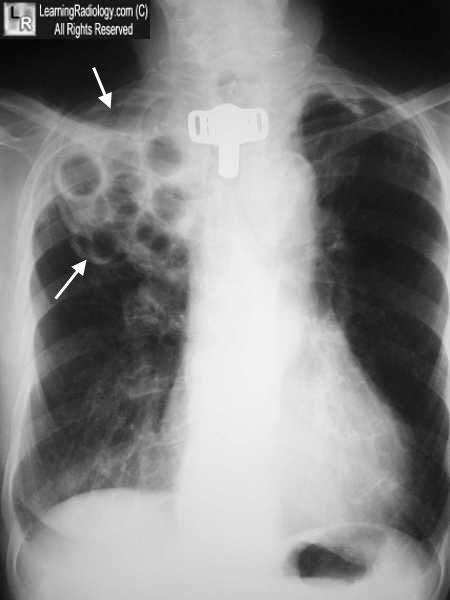|
|
Ping Pong Ball Plombage
Older Methods of Treating Tuberculosis
Early treatments of TB
- Early treatments of TB relied upon rest, proper nutrition and isolation
- In late 1800’s, the concept of artificial pneumothorax was introduced by Carlo Forlanini of Milan
- Speculated on the feasibility of collapsing lung by introducing air into the pleural space
- Intentional production of a lung collapse was thought to allow the lung to rest
- It usually did nothing except possibly to worsen the condition of the patient
- By early ‘40s, thousands of refills (reinjections of air) were being done each year to maintain the collapsed lung
- Pneumoperitoneum to rest the lung followed in the late 1940s
- These techniques were often combined with phrenicolysis (crushing or surgical division of the phrenic nerve) leading to ipsilateral paralysis of the diaphragm
- Plombage involved the extrapleural insertion of a “plombe” to collapse the lung
- Lucite balls (ping pong balls) appear as completely spherical densities of uniform size, usually in the upper lung field
- Such plombes included
- Sanatorium movement began slower in US than Europe
- Once started, many opened and became a major way of treating TB
- In 1953, 839 TB sanatoria were operating in the USA stressing
- Diet
- Regimented exercise
- High altitude (where possible)
- Bedrest
- Sunlight
- Cold air
- Chemotherapy
- Streptomycin was the first, widely-used, effective anti-tuberculous agent (1946)
- Subsequently, isoniazid (1952), pyrazinamide (1954), cycloserine (1955), ethambutol (1962) and rifampin (1963) were introduced
- In the 1980s, drug-resistant strains emerged and the number of cases increased
- Multiple drug treatment regimen is the standard of care: usually isoniazid, rifampin, pyrazinamide, and either ethambutol or streptomycin

Plombage for Tuberculosis. White arrows point to lucite balls that were inserted into the right upper thorax in order to collapse the adjacent right upper lobe as an early treatment for tuberculosis to "put the lung at rest."
For this same photo without the arrows, click here
For more information, click on the link if you see this icon 
|
|
|